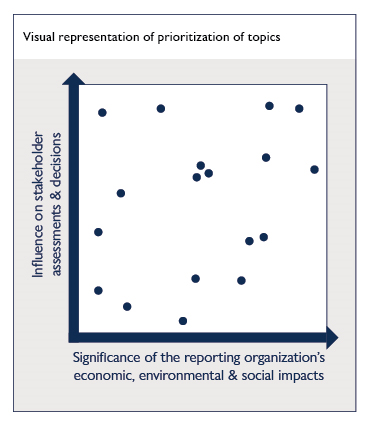Materiality Assessment Explained

Materiality assessment is one of the cornerstones of corporate sustainability. By defining what an entity considers material, it provides direction and guidance in terms of developing strategy, measuring impact, and eventually making sustainability gains. It is one of the first steps in the sustainability journey of an organization and deserves careful consideration, as, to a degree, it is materiality assessment that lays the foundation for sustainability analysis and strategy as well as the setting of goals and their hierarchy.
What does materiality assessment mean for a business?
For a business, a material issue, in the context of sustainability, is a social, environmental, or economic one that it has a considerable impact on, or is impacted by. For instance, for a business, GHG emissions are a material issue of considerable importance in terms of the impact its operations have on the environment. At the same time, the climate crisis is a key material issue in terms of the impact it has, and will have on the future workings of the business.
Additionally, materiality assessment is also the starting point for sustainability reporting. It is expected that the reporting business discloses information on issues that are material to its own operations as well as to the society and the environment it operates within.
In sustainability reporting, materiality is the principle that determines which relevant topics are sufficiently important that it is essential to report on them. Not all material topics are of equal importance, and the emphasis within a report is expected to reflect their relative priority.
GRI (Global Reporting Initiative)
How is materiality assessment depicted through Sustainability Materiality Matrix?
A sustainability materiality matrix is a visual representation of the material topics in the form of an infographic. Usually, the graph represents what is material to the business on the x-axis and what is material to stakeholders on the y-axis, with the inner space broken down into a hierarchy of importance, for example, zones classifying low to moderate to high to very high.

Double materiality is a concept which provides criteria for determination of whether a sustainability topic or information has to be included in the undertaking’s sustainability report. Double materiality is the union (in mathematical terms, i.e. union of two sets, not intersection) of impact materiality and financial materiality. A sustainability topic or information meets therefore the criteria of double materiality if it is material from the impact perspective or from the financial perspective or from both of these two perspectives.
PTF (Project Task Force)-ESRS (European Sustainability Reporting Standards)
EFRAG (European Financial Reporting Advisory Group)
Double materiality
Double materiality means understanding the inward and outward impact of a company’s operations on sustainability-related matters, mainly along environmental, social, and governance (ESG) parameters. Assessing materiality in this manner provides a company with a more comprehensive insight into its impact, and therefore helps it act more effectively in improving its sustainability performance. Such an assessment entails identifying and collecting data on issues that are material not just to the company’s own financial well-being but with broader ESG impact in mind. Going into the future, double materiality will be a key element of sustainability reporting as companies disclose sustainability information to multiple-stakeholder groups prioritizing impact disclosures in accordance with not just what is important to their own operations but also what is important from the perspective of the social and environmental landscape where these impacts are made.

The case for conducting materiality assessment with the help of an external sustainability agency
There are usually two ways in which businesses go about conducting a materiality assessment. They either do it in-house or with the help of external sustainability professionals and consultants. While the former is optimum for businesses with a pre-existing in-house team of sustainability professionals well versed and experienced with the topic, the latter provides all others an opportunity to get a materiality assessment done with a high level of quality and accuracy, while saving on key resources such as cost and time. Additionally, a materiality assessment that is done by an external sustainability agency provides an added level of credibility to the assessment as well as an assurance of accuracy.
